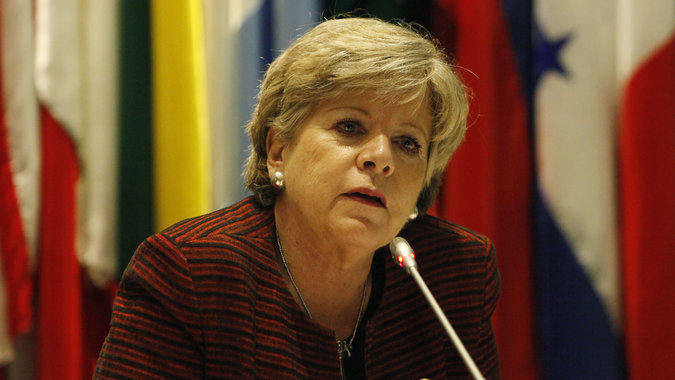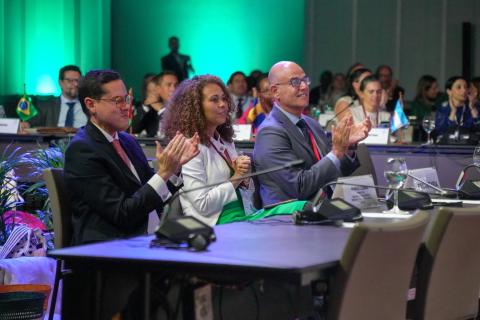News
(October 9, 2014) Latin America and the Caribbean’s foreign trade will experience its third year of stagnation in 2014, due to minimal growth in the region’s exports and a slight decline in its imports, the Economic Commission for Latin America and the Caribbean (ECLAC) reported today.
In Santiago, Chile, the United Nations organization released its annual report Latin America and the Caribbean in the World Economy 2014, which forecasts that the value of the region’s exports will grow just 0.8% on average this year after rising 23.5% in 2011, 1.6% in 2012 and falling 0.2% in 2013. The region’s imports are seen falling 0.6% in 2014, after rising 21.7% in 2011, and 3.0% in 2012 and 2013.
The weak performance of the region’s foreign trade is primarily due to a limited dynamism in the external demand from some of its main markets, particularly the European Union, as well as an important decline in intraregional trade. This is compounded by lower prices for numerous commodities that the region exports, especially minerals.
The report indicates that exports from Mexico and Central America will be more dynamic in 2014, with a 4.9% overall rise in value, linked to a better economic behaviour of the United States, while the Mercosur’s external sales will show a decline of 2.3%.
In the document, ECLAC underscores Latin American and Caribbean countries’ minimal participation in the world’s three main global value chains (North America, Europe and Asia). With the exception of Mexico, the region is not an important provider of non-commodities intermediate goods to these chains, nor does it carry much weight as an importer of intermediate goods originated in these world regions.
The organization emphasizes that the participation in international value chains can bring multiple potential benefits for the development of inclusive trade, which is to say, trade that favors growth and productivity, reduces structural heterogeneity, improves the well-being of the majority (employment and salaries), and reduces inequality.
The report adds that to expand the opportunities associated with a new approach to trade, based on greater intraregional and inter-regional coordination of value chains, it is essential that countries adopt active policies linked to increased investment in infrastructure, innovation and also science and technology, as well as inclusive financing policies that leverage small- and medium-sized enterprises (SMEs). This will allow them to climb to rungs that have more value-added, with improvements in the innovation of processes and products.
In the document, ECLAC also calls on countries to particularly strengthen regional integration and cooperation, since they represent an essential path for diversifying the region’s production and exportation structure.
Although South American and Central American countries export twice the number of products to other regional partners than they do to the United States and the European Union, and eight times the volume exported to China, there is still a low level of trade within Latin America and the Caribbean, with a limited degree of productive integration. In 2013 the percentage of the region’s exports going to countries within the same area was 19%, whereas the European Union exported 59% of its total sales to members of the same group, and Asia-Pacific countries, 50%.
“The regional market is key to developing value chains in Latin America and the Caribbean. Deepening this market is an indispensable strategy for advancing towards a global insertion that is more conducive to structural change,” Alicia Bárcena, ECLAC’s Executive Secretary, emphasized upon presenting the document.
For that reason, ECLAC indicates that countries’ industrial policies must be reformulated and shifted from an exclusively national vision to a regional or sub-regional one in which protectionism and competition to attract foreign investment through “incentive wars” are avoided, while at the same time these nations make progress towards a regional market with shared rules.
“Improving the quality of regional countries’ global insertion is fundamental for advancing towards sustainable and inclusive growth. This requires coordinating industrial and trade policies,” Bárcena said.
Finally, the report analyzes the intraregional and extra-regional relations of the countries in the Caribbean Community (CARICOM), putting a central focus on the need to strengthen regional integration in the production arena. In fact, the proportion of intraregional trade for countries in the CARICOM does not exceed 15%.
The document concludes that officials must urgently address the obstacles hindering the transformation of Caribbean countries’ production and exportation structures.
More information:
- Briefing paper. Latin America and the Caribbean in the World Economy 2014.



